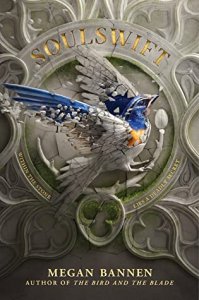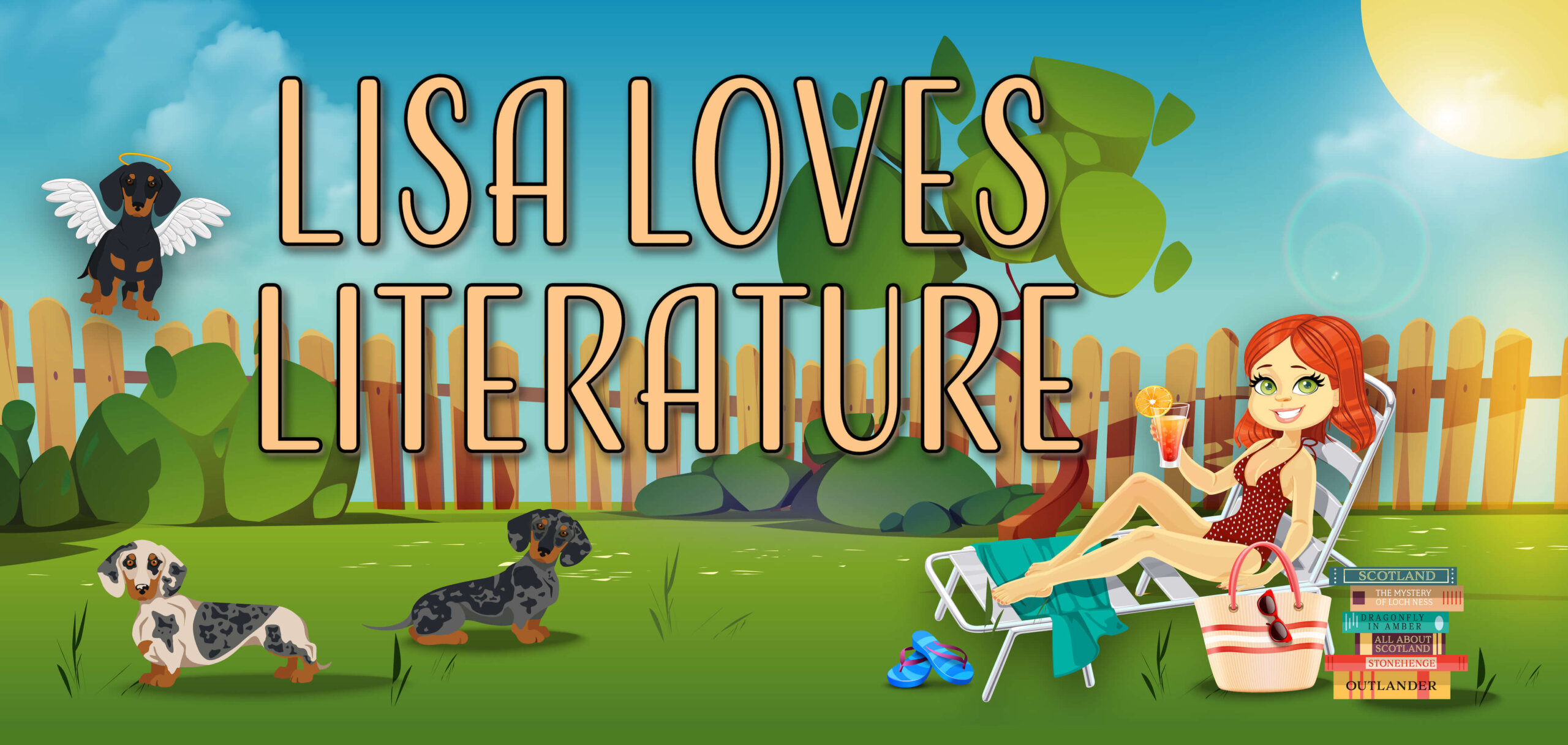I received this book for free from the author in exchange for an honest review. This does not affect my opinion of the book or the content of my review.
 Soulswift by Megan Bannen
Soulswift by Megan Bannen Published by Balzer + Bray on November 17, 2020
Genres: YA Fantasy
Pages: 480
Source: the author
Format: ARC
My Rating:

Goodreads
Buy on Amazon, Buy on Barnes & Noble
Synopsis:
A dark, epic fantasy about a girl who must reevaluate everything she believes after she is betrayed and hunted by the religion that raised her—from Megan Bannen, author of The Bird and the Blade. Perfect for fans of The Winner’s Curse and The Girl of Fire and Thorns.
Gelya is a Vessel, a girl who channels the word of the One True God through song. Cloistered with the other Vessels of her faith, she believes—as all Ovinists do—that a saint imprisoned Elath the Great Demon centuries ago, saving humanity from earthly temptation.
When Gelya stumbles into a deadly cover-up by the Ovinists’ military, she reluctantly teams up with Tavik, an enemy soldier, to survive. Tavik believes that Elath is actually a mother goddess who must be set free, but while he succeeds in opening Her prison, he inadvertently turns Gelya into Elath’s unwilling human vessel.
Now the church that raised Gelya considers her a threat. In a race against the clock, she and Tavik must find a way to exorcise Elath’s presence from her body. But will this release stop the countdown to the end of the world, or will it be the cause of the earth’s destruction? And as Tavik and Gelya grow closer, another question lingers between them: What will become of Gelya?
My Review:
Once again we get a beautifully written story from Megan Bannen. As I read the story I was pulled in by all the vivid descriptions of the people and places and even the different types of wildlife. There were so many different layers to this story. Ones that often made me tear up, or even wonder if the main characters might get a break and be successful. I wondered back and forth, as did the Gelya, about who she could really trust, and who might possibly be double-crossing or hiding something from her. There was even a bit of a twist at the end that fell right into place with how the story was going and brought it to a different level. I feel like you get a lot of info in the synopsis above, and I don’t want to give too much away in a review, because I really feel you have to read it to get the full effect of the story. The cover, like the first book by this author, is the perfect invitation to a picture-perfect story, and it is a work of art like the story inside.
I was lucky enough to see the author put out an offer to be part of an ARC tour for this one, so I got the ARC mailed to me to read back in September. Of course I had to post on Instagram about it, so here is my picture:

Author Interview:
1. What does your writing process look like? Do you know the whole story when you start? Or do you just start writing and go with it (seat of the pants writing)? If you plan it out, how do you do that? Outline, notecards, post-it-notes, etc.?
Everytime I start a new book, I feel like I’ve forgotten how to write one. As a general rule, I start with an idea, and I usually know a few key scenes that are going to happen over the course of the story–what I call the spine of the book. Past that, it’s a messy slog until, eventually I wind up with a barely comprehensible, completed draft that I can start revising. I guess that puts me in Pantser territory. I do use Scrivener to create a skeletal draft of scenes, consisting mostly of dialogue and a few notes on action.
2. Do you edit as you go, or wait till you’re finished before you edit? How many times would you say you go over it yourself before having another set of eyes look it over?
My attitude toward revising as you go has changed over time. When I first started writing, I found the Keep Writing Until You Get to the End Method most helpful; otherwise, I don’t know that I would ever have made it through a draft. Now that I’m more confident in my ability to complete a book, I find myself revising the first few chapters, then revising the first one hundred pages or so before completing the entire draft. What I’ve learned about myself over the past few years is that most of the problems that surface during the editorial process are related to world-building. If I can straighten those out early on, I find it much easier to complete the rest of the book. But no matter how I get through a draft, I take the time to revise it and make it as good as I can get it on my own before I hand it off to critique partners.
3. Are you part of a writers group that gets together and helps each other with their writing?
Yes! I’ve been in a group with my friends Kathee and Jenny for eight years now, and there’s no way I would have made it through THE BIRD AND THE BLADE without them. (That’s why I dedicated the book to them.) I’m also in a critique group with Miranda Asebedo (THE DEEPEST ROOTS, A CONSTELLATION OF ROSES) and Amanda Sellet (BY THE BOOK). We now meet virtually every Wednesday, and let me tell you, that Zoom call is the highlight of my week for so many reasons. They are both wonderful writers (and wonderful friends) and their feedback is incredibly insightful. Finally, I exchange work with the very talented Tanaz Bhathena (HUNTED BY THE SKY, etc.). If you haven’t read any of her books yet, you should definitely remedy that. I find it very helpful to critique work by and receive feedback from a variety of people. As a writer, you can learn so much by seeing what other authors do well, and in terms of being the recipient of feedback, it helps to have different people weigh in over the course of several drafts.
4. How do you come up with your ideas for your stories?
I’m always unsure how to answer this question. I suppose that every now and then, I bump into something that, for whatever reason, feels like it has story potential. For example, sometime in early 2016, I decided that I wanted to write a book that had the same emotional tone as Ralph Vaughn Williams’s “The Lark Ascending.” That was how SOULSWIFT began to take shape. More recently, I came across a photograph on Pinterest that was both charming and odd, and I knew that I had to write a book about it. I keep a OneNote binder of story ideas, and I read through it from time to time to see if something jumps out at me. It’s those little bits of inspiration that cling on and won’t let go that I eventually have to write.
5. How long have you been writing?
Nine years. I tried writing a novel in the early 2000s, but I didn’t get really serious about writing until late 2011. I spent a year trying to draft THE BIRD AND THE BLADE, flailing all the way. By November of 2012, I was so frustrated with myself that I tossed out everything I had written up to that point and committed to writing the whole book from scratch during National Novel Writing Month. By the end of that month, I had my first completed manuscript. I continued to revise the book for several years, but I never had the intention of trying to publish it until sometime in 2015, when I found myself looking at the YA books at the library where I was working and thought, “You know, I think my book is about as good as at least half the books on this shelf.”
6. What tips do you have for aspiring writers?
Writing a book and publishing a book are two completely different things, so the sooner you can separate them in your mind, the happier you will be. Publishing is a tough business. Even though I’m a published author with a fantastic literary agent, I still get told no all the time. Every professional writer does. So you have to find an intrinsic reason to write, something that makes all that hard work valuable to you personally, because there’s always a chance–a pretty good chance, in fact–that whatever you’re working on won’t see the light of day. And that’s okay.
7. How important are names in your books? Do you choose the names based on liking the way it sounds, or the meaning? Do you have any name choosing resources you recommend?
Honestly, I don’t sweat names too much, but I did run into a weird problem as I tried to name Tavik in SOULSWIFT. Every time I hit upon a grouping of letters and sounds that felt right, I’d google it and find that it was already a name in Hindi or meant something rude in Estonian, things like that. If I recall correctly, the word tavik means something innocuous in Hebrew, so I went with it.
About the Author:

Megan Bannen is the author of SOULSWIFT and THE BIRD AND THE BLADE, a Kirkus Best Young Adult Book of 2018 and an Indies Introduce selection. An avid coffee drinker and mediocre ukulele player, Megan lives in the Kansas City area with her husband and their two children. She’s a full-time writer, but her librarian heart will always belong to the reference desk.

I’m so glad you enjoyed this one! I’ve definitely had my eye on it and I’ve been meaning to check Megan Bannen out.
Her books are so beautifully written! I hope you get the chance to check it out soon! Thanks for stopping by!